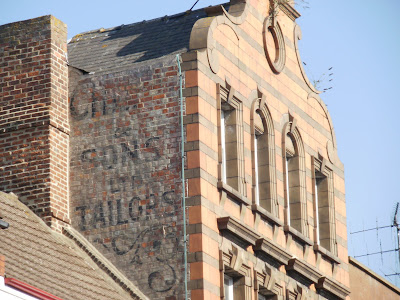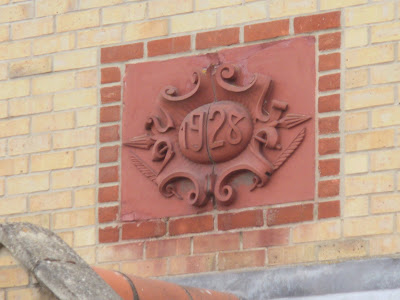At 11 p.m. one night at the end of June 1964 in Stanbow Lane, Boston, a beat group shattered the cool night air with a twanging version of "Knees-up Mother Brown" and with this soundtrack one of Boston's good old fashioned pubs curled up and died. All the regulars were there, and in the yard, lit by a string of naked light bulbs, some of them did get their knees up as they danced around on the hardened earth that was once a lawn.
The Blue Lion, bottom left,
"I shall enjoy this, it will be the last", said regular Jack Fletcher as he drank his pint of Mild, and he could have been speaking for everyone present as they ordered their last drinks because for after more than 180 years progress had caught up with the pub and it was to be demolished as part of the Lincoln Lane re-development scheme.
Before the footbridge was built over the river, the Blue Lion can just be seen on the left, opposite the Stump.
"It used to be one of the best pubs in the town", said Mr. Owen Hill, a regular for nine years. "I've been in the bar when you couldn't move". You could move on the closing night though, the bar was only half filled and a handful of regulars stood out in the yard listening to the beat group "Jerry and the Kodas".
"A lot of the old ones aren't here". explained Mrs. J. Holland, another regular. "When their houses were pulled down and they moved onto the Council estates it was too far for them to come".
At last the final pint was pulled and farewells were exchanged as the regulars went off on their different ways and later in the week when the landlord and landlady, Mr. and Mrs. Bob Mawer moved out the shell of the Blue Lion looked out over the river with sightless eyes, as though it could already see the demolition men coming.















